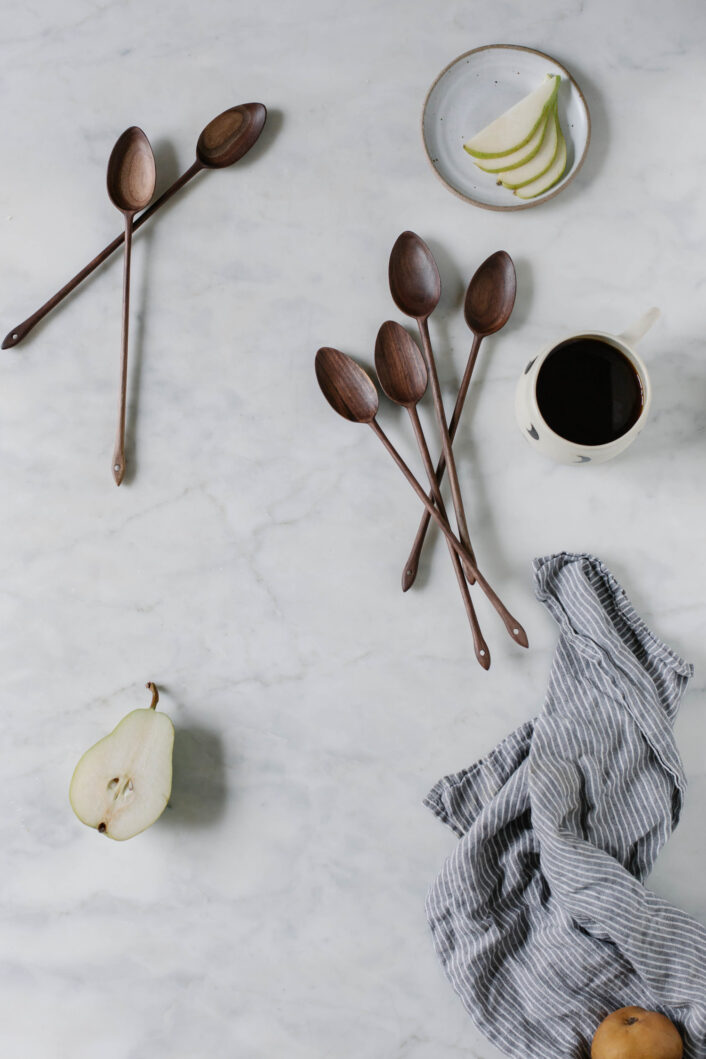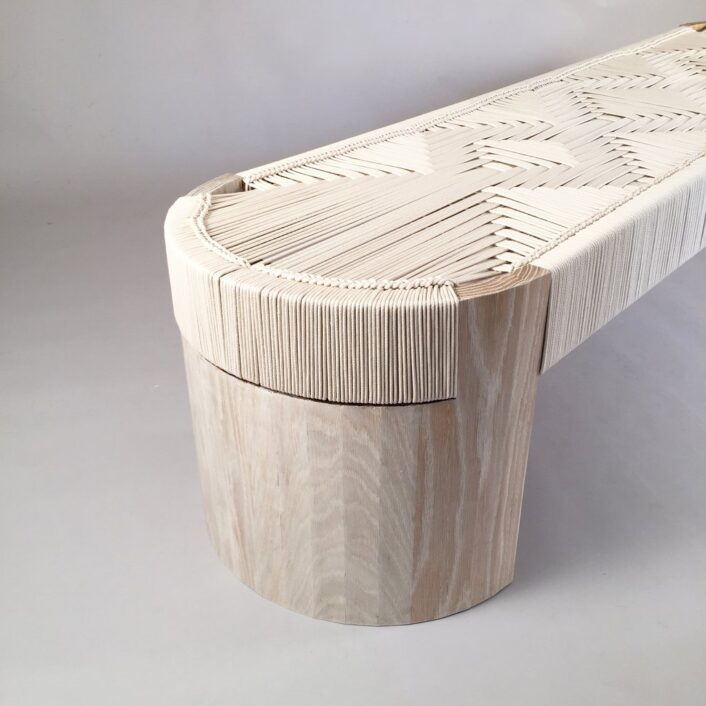Culture
Hugo Franca, the maestro of wood
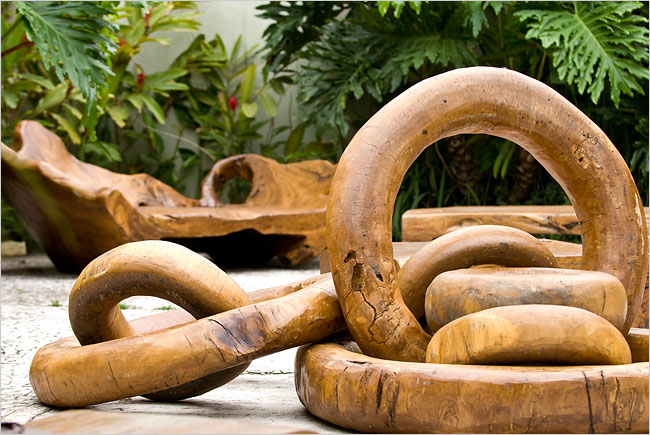
Large sculptural rings made from trees’ root systems.
Image courtesy of: The New York Times, photographed by: Paulo Fridma
Hugo Franca has earned the name of “master woodworker” for good reason. This Brazilian furniture designer and sculptor is best known for creating stunning chairs, tables, and benches that look as if they grew in place. Franca is different from other designers in that he waits until he has found the raw material to come up with a specific design.
During the 1980s and 90s, Franca lived in a remote Brazilian forest. This “self-imposed” exile began in 1982 after Franca became disenchanted with Brazil’s military dictatorship. It was during this time that he gained a true appreciation for this exceptional medium. Now, he looks for fallen and burnt trunks and roots which are left over from deforestation. The sculptor and furniture designer allows these remnant forms to guide his design process.
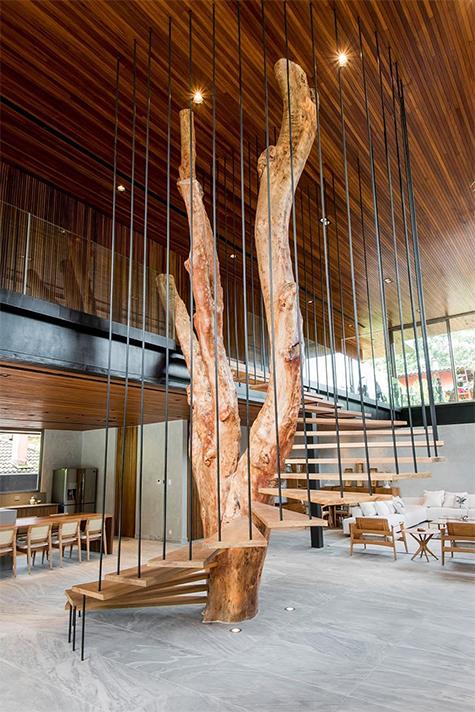
A red Angelim tree from the Atlantic Forest is the center of a floating staircase at a private residence in Ubatuba, Brazil.
Image courtesy of: Fantasticoh, photographed by: Andre Godoy
Every 45 days, Franca takes a 1,000-mile trip to his two studios in the Bahian fishing village of Trancoso. At this locale near the Atlantic coast, Franca works with his trusted artisans to give new life to previously abandoned pieces. He follows tips from local ranch hands, farmers, and Native Indians who tell the artist where discarded tree trunks can be found.
The right wood is a treasure, and Franca is committed to driving for miles and miles in his Fiat or motorcycle over bumpy roads to find the wooden prize. Sometimes, Franca and his two trusted assistants camp out in sleeping bags with the bare-bone provisions they packed, wake up, and then walk for hours through the forest with lots of bug repellent and machetes. When they finally find those trees, it is all worth it!
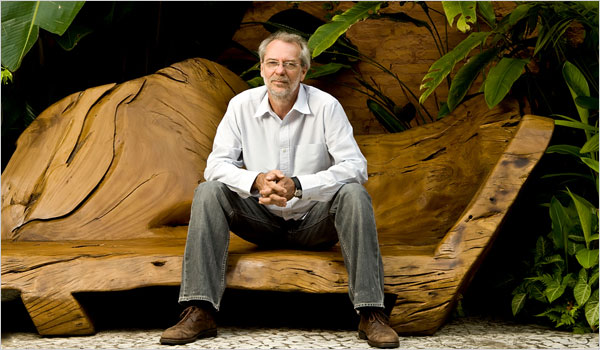
Franca in his Sao Paulo showroom, sitting on a “sofa”.
Image courtesy of: The New York Times, photographed by: Paulo Fridman
Years ago, ranchers would be happy to have Franca remove the trees as they were considered trash. However, now that Franca has become successful, those same ranchers have began charging more and more money for those same artifacts to be taken from their property. The process has become more complicated and costly. Even though the raw material is found discarded in nature and does not have an established commercial value, Franca still has to negotiate with the landowners for the wood.
Marcelo Vasconcellos, a partner at Equinocial (a gallery that focuses on contemporary and modern Brazilian design) said about Franca, “His work brings to the fore urgent issues that design can no longer ignore- such as sustainability, the connection with nature and the appreciation of the historical value of materials- all with an incredible aesthetic result.”
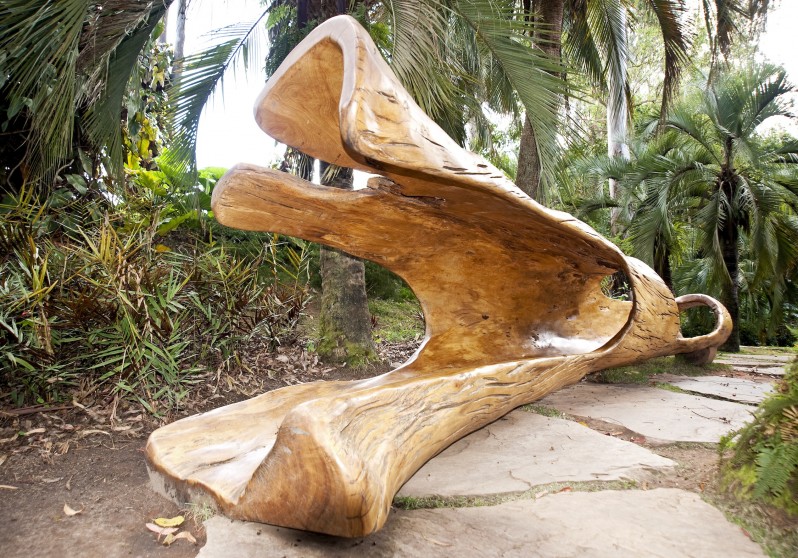
The jungle region of Bahia was the unfortunate recipient of the deforestation which occurred the 1960s and 70s when forests were slashed and burned for cattle grazing and agriculture. Due to that reason, the area has many charred six-foot-tall tree trunks. Furthermore, there are also quite a few trees that died from either drought or flood, but which still stand 150-feet-high.
Image courtesy of: Vancouver Biennale
Franca has spent much of his career working with the pequot tree; however, it is now becoming harder and harder to find it in nature. The tree is in advanced stages of extinctions and thus, it is becoming quite scarce. Until now, pequi has amounted to ninety percent of the wood he uses for his production. However now, the artist is working with other species more frequently. Obviously, each species is unique and has its own characteristics.
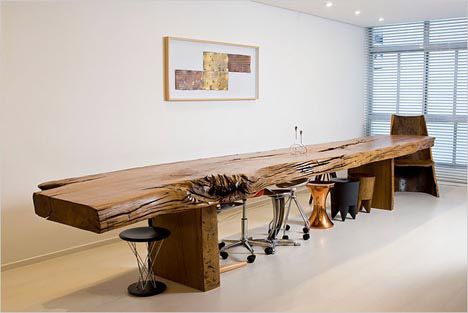
A table made from one entire tree trunk.
Image courtesy of: Treehugger
The process of creation begins with a very careful inspection of the trunk or root. Then, Franca draws directly on the wood with chalk rather than sketching on paper. There are four expert chainsaw artisans that have been a part of Franca’s team for many years; and they are the ones who cut the tree according to the “chalk instructions”. Once this process is complete, the other four workers finish the pieces… this part of the job is quite delicate and time-consuming.
We love this quote by Franca which beautifully highlights his ethos, “My process is very intuitive. The main inspiration is each tree- not only because of its beautiful natural form but also because it has a history.”
